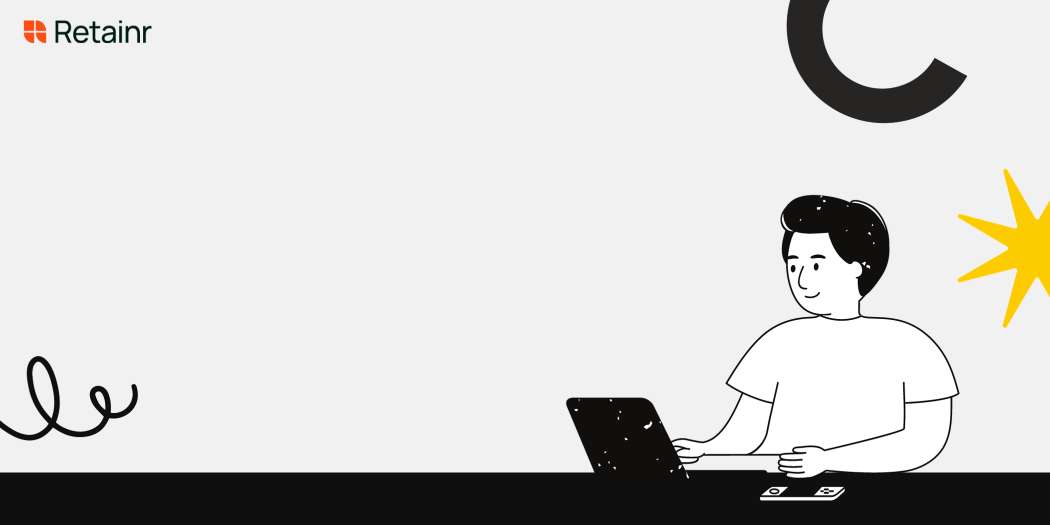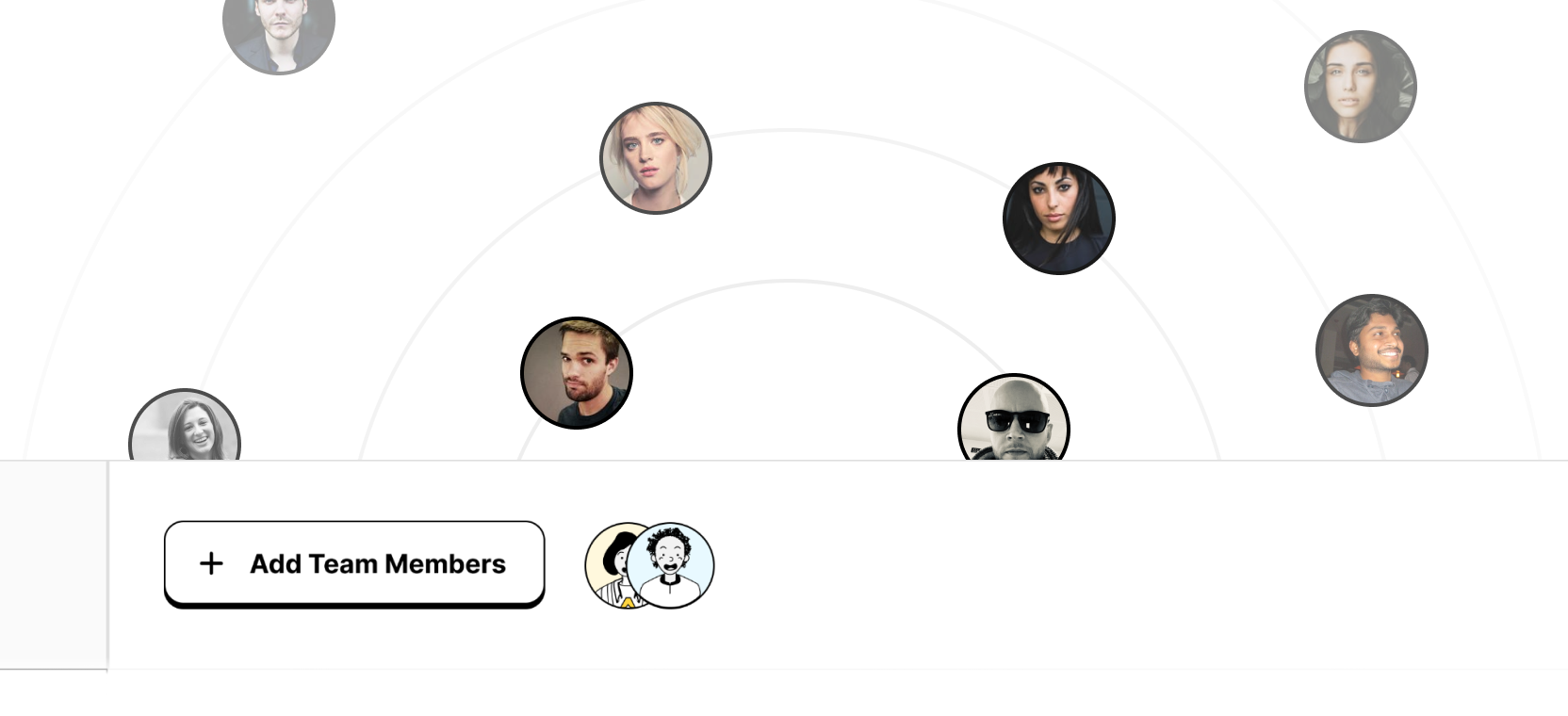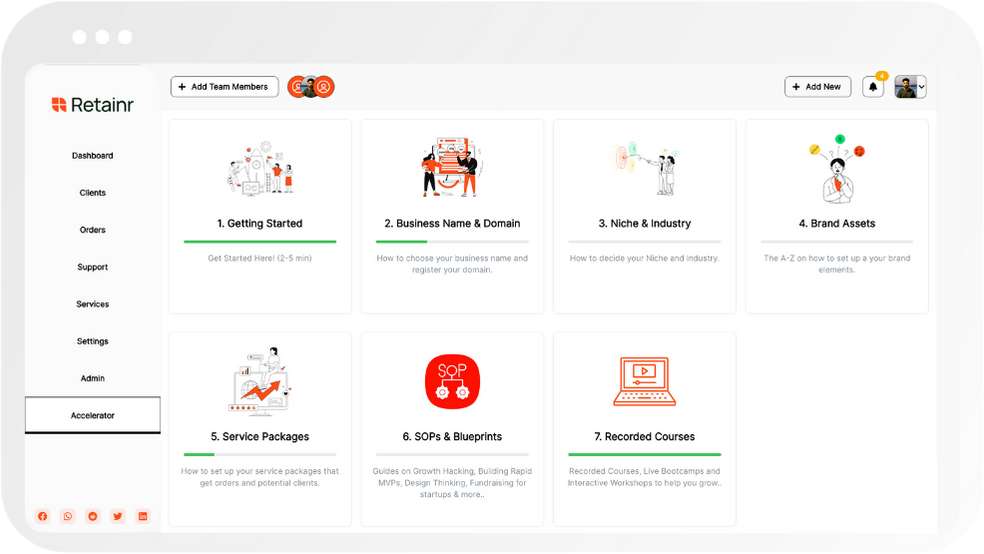
How to Implement Task Tracking in Your Workflow
Build with Retainr
Sell your products and services, manage clients, orders, payments, automate your client onboarding and management with your own branded web application.
Get Started1. What is task tracking and why is it important in a workflow?
What is Task Tracking?
Task tracking is a systematic method of managing individual tasks from commencement to completion. It involves keeping an organized record of tasks, who they are assigned to, their timelines, and their current status. This can be achieved using digital tools or through traditional systems like task lists or spreadsheets. Task tracking encapsulates planning, testing, documentation, and reporting of tasks.
- Planning: Determining the tasks to be done and setting timelines.
- Testing: Checking the tasks for any errors or issues.
- Documentation: Recording details about the tasks, such as its initiation, status updates, completion, and any problems encountered.
- Reporting: Communicating the status and any other necessary details about the tasks to relevant parties.
Importance of Task Tracking in a Workflow
Task tracking is integral in a workflow for a host of reasons. It promotes transparency, boosts productivity, facilitates accountability, and enhances operational efficiency. The benefits of task tracking are particularly evident in project management, where it aids in monitoring progress and ensuring that projects stay on schedule and within budget.
| Benefits of Task Tracking |
|---|
| Promotes Transparency |
| Boosts Productivity |
| Facilitates Accountability |
| Enhances operational efficiency |
Moreover, task tracking allows for early identification and resolution of issues, status tracking in real-time, and efficient resource allocation. It also provides valuable data that can be used for future planning and decision making.
2. How can I effectively implement task tracking in my workflow?
Steps to Implement Task Tracking
Implementing effective task tracking in your workflow involves various steps. Firstly, you should identify and list down all your tasks in an organized manner. Secondly, prioritize these tasks according to their importance and urgency. Lastly, assign deadlines for each task to ensure they will be completed on time. Utilizing a task management tool, whether digital or traditional, can greatly enhance this process.
- Identify your tasks: Clearly list out what needs to be done in the most granular way possible. This might include everything from daily to-do items, to larger projects with various deliverables.
- Prioritize your tasks: Determine the urgency and importance of each task. This can help you focus your resources on the most impactful tasks.
- Assign deadlines: Deadlines are a great way to make sure tasks get completed. They can be set in your task management tool and tracked for progress.
Using a Task Tracking Tool
Utilizing a task management or tracking tool is often a very effective way to implement task tracking in your workflow. These tools provide a central place where tasks can be created, assigned, prioritized, and tracked. This can lead to improved productivity and better management of your tasks. Here is an example of how tasks might be organized in such a tool.
| Task | Priority | Deadline |
|---|---|---|
| Complete project proposal | High | 1/1/2023 |
| Respond to emails | Low | 1/2/2023 |
| Plan team meeting | Medium | 1/3/2023 |
3. What are the steps to include task tracking in my existing workflow?
Initial Planning and Setup
The first step in including task tracking into your workflow involves careful planning and initial setup. Start with a thorough audit of your existing daily tasks to acknowledge existing patterns and identify areas for improvement:
- Outline your daily, weekly, and monthly tasks
- Determine tasks' urgency and importance
- Identify dependencies between tasks and process bottlenecks
Creating a Task Tracking System
In the next phase, once you have chosen your task tracking method, create a systematic process for managing and documenting tasks. Below is an example of one way to categorize your tasks:
| Task Category | Examples of Tasks |
|---|---|
| High Urgency/High Importance | Client meetings, project deadlines |
| High Urgency/Low Importance | Responding to non-urgent emails, routine admin tasks |
| Low Urgency/High Importance | Strategic planning, skills development |
| Low Urgency/Low Importance | Social media browsing, casual reading |
Monitoring and Adjusting the Tracking System
The final step is to monitor and adjust your task tracking system regularly. This is important to ensure that the system remains effective and adaptable to changing circumstances. Here are some suggestions on how to review and improve your system:
- Regularly review completion rates and times for various tasks.
- Monitor the balance between different task categories in your schedule.
- Adjust your priorities based on observed trends and new developments in your workflow.
- Continually refine your task tracking system and process based on regular reviews, new experiences, and feedback.
4. What tools or software are available for task tracking in workflow management?
Task Tracking Tools and Software
In the current digital age, there are numerous task tracking tools and software available that can easily be integrated into workflow management. These tools assist in project management, help in prioritizing tasks, foster team collaboration, and enhance the overall productivity of your organization. A few of these tools are:
- Asana: Known for its simplicity and versatility, it allows creation of tasks, projects, and subtasks. Also, it aids in tracking progress and setting reminders.
- Trello: Based on Kanban methodology, this tool is ideal for tracking tasks visually. It uses cards and boards to organize and prioritize tasks in a flexible way.
- Jira: Best suited for Agile teams, it offers features like Scrum boards, Kanban boards, roadmaps, and more to manage, track, and release software.
- Basecamp: An all-in-one tool for project management and team collaboration. It combines many features such as to-do lists, message boards, schedules, documents & file storage, and more.
- Monday.com: This is a Work OS where teams can create workflow apps to plan, run, and track processes, projects, and everyday work.
Task Tracking Software Comparison
When choosing a task tracking system, it’s important to consider several factors such as its features, pricing, user interface, etc. To help with this decision, following is a basic comparison of some popular task management tools:
| Task Tracking Software | Key Features | Price |
|---|---|---|
| Asana | Project planning & scheduling, team collaboration, task assigning & notifications | Free basic version, Premium from $10.99 per user/month |
| Trello | Unlimited boards, lists, cards, members, checklists, attachments, etc. | Free basic version, Business Class $9.99 per user/month |
| Jira | Advanced reporting, customized workflows, over 1000 add-ons | Free for up to 10 users, Standard $7 per user/month |
| Basecamp | To-do lists, file sharing, message boards, schedules, group chat | Flat rate of $99 per month |
| Monday.com | Fully customizable, automated repetitive work, time tracking, dashboards | Basic $8 per seat/month, Standard $10 per seat/month, Pro $16 per seat/month, Enterprise Custom Pricing |
5. How can task tracking improve productivity and efficiency in my workflow?
Benefits of Task Tracking to Productivity and Efficiency
Task tracking is crucial for improving productivity and efficiency because it provides clarity and structure to your tasks. Firstly, it helps you manage your time better, leading to increased productivity. When each task is accounted for and clearly defined, individuals know precisely what is expected of them and are more likely to stay focused and efficient.
- Increased Visibility: Task tracking enables each team member to see their tasks, ensuring everyone knows what to do next. This increased visibility reduces idle time and promotes efficiency.
- Focus on Priorities: The prioritization of tasks becomes easier with task tracking. Knowing what needs to be done first helps save time, reduces stress, and enables more tasks to be accomplished in less time.
- Improved Collaboration: Task tracking allows for seamless collaboration among team members, which speeds up task execution and enhances productivity.
Role of Task Tracking in Workflow Efficiency
Task tracking plays a significant role in streamlining workflow, leading to enhanced efficiency. It provides a detailed overview of the projects and aids in determining the exact status of the ongoing tasks. It becomes easy to identify bottlenecks, leading to quicker problem-solving.
| Process | Without Task Tracking | With Task Tracking |
|---|---|---|
| Task Assignment | Can be chaotic and confusing | Clearly defined and organized |
| Timeline Management | Difficult to define and track | Easy to create, monitor and adjust |
| Resource Allocation | Can lead to wastage and mismanagement | Optimized and streamlined |
6. Can I implement task tracking if I have a remote team?
Implementing Task Tracking with a Remote Team
Yes, it is absolutely possible to implement task tracking with a remote team. Perhaps it's even more crucial in a remote setting to keep track of tasks and ensure that everyone is on the same page. With proper tools and practices, you can effectively manage your remote team's workflow.
Tools for Remote Task Tracking
- Asana: A project management tool which allows you to assign tasks to your team members, set deadlines, and monitor progress.
- Trello: A web-based Kanban-style list-making application allowing you to visually organize tasks.
- Slack: While not technically a task tracking tool, it's useful for communication and integrates well with other tools.
Best Practices for Remote Team Task Tracking
| Best Practice | Description |
|---|---|
| Clear Assignment of Tasks | Every task should have a clear assignee, so each team member knows exactly what they are responsible for. |
| Regular Status Updates | Team members should frequently update their status for each task. This transparency ensures everyone is aligned. |
| Periodic Team Meetings | Regular meetings, whether daily stand-ups or weekly roundups, help keep everyone updated and engaged. |
7. Are there different methods of task tracking suitable for different types of workflows?
Different Methods of Task Tracking Suitable for Different Workflows
There are various methods of task tracking that must be adopted according to the workflow. Some workflows might work best with manual task tracking method while others may thrive with a digital task tracking method. For instance, if your work relies heavily on paperwork and physical evidence, a manual log of activities such as a journal or a calendar might be suitable. However, if your work is based on digital platforms, then digital methods such as project management software or apps can be more efficient.
Manual Methods of Task Tracking
- Physical Calendar: A visual aid that helps in tracking deadlines, meetings and important events.
- To-Do List: A simple list of tasks or activities that need to be done. This can be written in a notebook or a whiteboard.
- Journaling: It can help keep track of detailed tasks, conversations, and ideas. A journal may include thoughts, perspectives and reflections regarding the tasks.
Digital Methods of Task Tracking
The following tables provide a quick overview of the benefits and limitations of some of the most common types of digital task-tracking software.
| Software | Benefits | Limitations |
|---|---|---|
| Asana | Useful for team collaboration, easy to prioritize tasks, allows setting deadlines. | Difficult to use for complex projects, pricing is based on user count. |
| Trello | Offers a visual interface, flexible to use, perfect for smaller tasks or projects. | Not suitable for handling large volumes of tasks, limited reporting functionality. |
| Jira | Ideal for software development teams, detailed reporting. | Can have a steep learning curve, may be too complex for smaller teams. |
8. What factors should I consider when choosing a task tracking system for my workflow?
Factors to consider when choosing a Task Tracking System
There are several key factors to consider when investigating which task tracking system to incorporate into your workflow. These factors will ensure the system is suited to your specific team requirements and optimized for efficiency.
- Functionality: Does the system have the essential features you need, such as task assignment, due dates, status updates, and progress tracking?
- User-Friendliness: The system should be easy to use. Difficult software can result in decreased productivity and may discourage your team from using it.
- Collaboration Tools: Collaboration features like comments, file sharing, and the ability to tag team members can boost teamwork.
- Integration: The task tracking system should be compatible with your existing software and provide integrations with the tools your team already uses in their workflow.
- Price: Consider your budget. There are numerous excellent free tools available, while others may require a monthly subscription.
Comparison Table for Task Tracking Systems
Here is a comparison table for some popular task tracking systems based on the factors listed above:
| Task Tracking System | Functionality | User-Friendliness | Collaboration Tools | Integration | Price |
|---|---|---|---|---|---|
| Trello | High | High | Medium | High | Free/Paid |
| Asana | High | Medium | High | High | Paid |
| Slack | Medium | High | High | High | Free/Paid |
This table should give you a basic idea of how different task tracking systems compare based on various factors.
9. How do I train my team to use the task tracking feature in our workflow?
Training your Team on using Task Tracking Feature
Training your team to effectively use the task tracking feature in your workflow involves a step-by-step approach. Firstly, you need to explain the benefits of using the task tracking feature. This can include an increase in productivity, improved collaboration, and better project management. Secondly, you need to demonstrate how to use the feature, ideally in a team meeting or a dedicated training session. Here, you can perform live demonstrations and encourage your team to follow along on their own devices. Lastly, give room for practice and feedback, where team members can familiarize themselves with the new system and express their questions or concerns.
Tips for Conducting Task Tracking Training
- Prepare a clear and concise training plan: Simplify the training process by breaking down the steps into chunks.
- Use existing team projects as examples: This can help your team understand how the task tracking feature applies to their daily tasks.
- Start with the basics: Don’t rush into complex functionalities. Build up from the basics to keep everyone on the same page.
Task Tracking Training Checklist
| Training Task | Description |
|---|---|
| Create a Task | Train your team on how to create a new task, set deadlines, and assign responsibilities. |
| Update a Task | Show them how to update task progress, add comments, or change deadlines and responsibilities where needed. |
| Closing a Task | Explain the importance of marking tasks as complete and maintaining a record of accomplished tasks. |
10. How can I measure the success of task tracking implementation in my workflow?
Measuring Success of Task Tracking Implementation
Tracking and measuring the success of task tracking implementation in your workflow is a critical process. There are several ways to assess the effectiveness of your task tracking efforts. Top three ways include:
- Analysis of Completion Rates - Track the number of tasks completed versus the number of tasks assigned over a certain period.
- Timeliness - Monitor the timely completion of tasks. Compare the estimated time required for a task to the actual time it took to complete.
- Task Quality - Ensure that tasks are not only completed in time, but also are done with good quality.
By tracking these metrics, you can gain valuable insights into your team's performance and productivity. Another aspect to consider is user feedback and engagement. This helps to understand how users perceive the tool and its impact on their productivity.
Sample scorecard for Task Tracking Success Measure
A scorecard or a table can be maintained to record and assess these parameters on a regular basis. Here is a sample format for the scorecard:
| Parameters | This Week | Last Week | Change (%) |
|---|---|---|---|
| Completion Rates | 80% | 70% | +14% |
| Timeliness | 75% | 65% | +15% |
| Task Quality | 85% | 75% | +13% |
Conclusion
Steps to Implement Task Tracking into your Workflow
Implementing task tracking into your workflow is all about organizing, prioritizing, and overseeing work. It begins with identifying all tasks, assigning them to appropriate team members, and ensuring everyone knows their responsibilities. The software helps to manage deadlines, track progress, provide real-time updates, and streamline communication.
Why you should choose Retainr.io for task tracking
Retainr.io is a cutting-edge task tracking software designed to help businesses manage their tasks efficiently. Its dynamic features offer a comprehensive solution for businesses to handle their clients, orders, payments and more within a customized, branded app. This versatile software not only improves task management and workflow productivity but also empowers businesses to manage and grow.
Key Benefits of Retainr.io
- Streamlines Task Management: Retainr.io allows businesses to effectively manage their to-do lists, prioritize tasks and track progress in real-time.
- Complete Control: As a whitelabel software, Retainr.io hands the keys of control over to you. Customize the platform to suit your business model.
- Effective Client Management: With Retainr.io, businesses can handle all their client interactions in one place, from sales to customer service.
- Efficient Order and Payment Handling: Retainr.io simplifies the process of managing orders and processing payments, reducing the risk of errors.
No matter what industry you're in, task tracking is an essential part of project management. Retainr.io is your one-stop solution for task tracking and more. Enhance your workflow, manage tasks, clients, and payments with ease. Check out what Retainr.io can do for your business today.
Boost Your Agency Growth
with Retainr Accelerator
Uncover secrets, strategies, and exclusive blueprints to take your agency's growth to the next level — from marketing insights to effective presentations and leveraging technology.

SOPs, Cheatsheets & Blueprints
Leverage 50+ SOPs (valued over $10K) offering practical guides, scripts, tools, hacks, templates, and cheat sheets to fast-track your startup's growth.
Connect with fellow entrepreneurs, share experiences, and get expert insights within our exclusive Facebook community.
.jpg)

Join a thriving community of growth hackers. Network, collaborate, and learn from like-minded entrepreneurs on a lifelong journey to success.

Gain expertise with recorded Courses, Live Bootcamps and interactive Workshops on topics like growth hacking, copywriting, no-code funnel building, performance marketing and more, taught by seasoned coaches & industry experts.

.jpg)

.jpeg)


